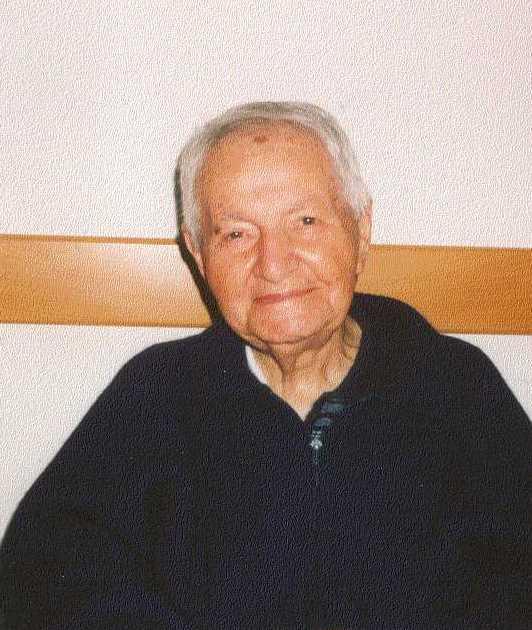Daniel Comboni
Missionnaires Comboniens
Zone institutionnelle
D’autres liens
Newsletter
In Pace Christi
Piacentini Antonio
Fr. Antonio Piacentini’s death marks nearly the end of the first group of Comboni Missionaries (6 priests and 3 brothers) who arrived in Baja California in the by now distant 1948. The only surviving member of that group is Bro. Arsenio Ferrari who, at 81, still works in Baja California, in the mission of Bahía Asunción.
Fr. Antonio was born in Trescore Cremasco in 1915. At the age of 13 he entered the diocesan seminary in Crema. At the end of his secondary education he entered the noviciate in Venegono where, after the required two years, he took his first vows (1935). On 29 June 1940 he was ordained priest in Verona. He spent his first years in ministry, first in Crema, doing mission promotion for two years, then for three years at San Pancrazio in Rome, as parish priest, and finally in Bologna for one year. On 1 January 1948 he was assigned to the province of Mexico where he worked for the next uninterrupted 34 years, up to 1982.
Fr. Domenico Zugliani has this to say about him.
“Fr. Antonio arrived in La Paz on 24 July 1948. After a period of preparation in the Vicariate of Tijuana, to learn Spanish, he went to La Paz as chaplain until November 1949, when he was substituted by Fr. Gino Sterza. Fr. Antonio was sent to reopen the mission of La Purísima together with Bro. Ferrari. They left La Paz on Monday, 14 November, and, on the way, they stopped briefly in many places, wherever a few people would gather, to celebrate Mass. They reached La Purísima on Sunday 20 November. They looked for the rectory and found a 4 x 4 metres room that had three doors, but no windows. They had to borrow two cots for the night.
“A hall without benches or chairs served as a church and a table as an altar. A wooden box was turned into a tabernacle. A length of cloth was used as a curtain for the single window in the room and, behind the curtain, functioning almost as a closet, there were piles of plastic flowers and old holy cards. On the first page of his mission diary Fr. Antonio wrote: ‘If the Lord of the universe has not minded our great poverty, we too as well should not mind the poverty of this room.’
“In July 1951 the archbishop of Mexico City entrusted to the Comboni Institute the Vicariate of Tepepan, near Xochimilco, and Fr. Pietro Vignato was nominated vicar. A few months later, in November, Fr. Antonio arrived at Tepepan, charged with the job of keeping contacts with the government and of handling the immigration papers. These papers required a lot of time, but were necessary to obtain the residence permits of the missionaries in Baja California. During his stay at Tepepan, Fr. Antonio met Mrs. Josefina Galván, widow of Mr. Meléndez and a very great benefactor of the Comboni Missionaries, who gave her entire patrimony for the building of the Comboni noviciate in Xochimilco.
“For a while Fr. Antonio was also rector of the minor seminary for aspirants to the Brotherhood in Moctezuma. In September 1960 he moved with the aspirants to San Francisco del Rincón. In 1963 he returned to pastoral work in Baja California. He subsequently worked in San Ignacio, Guerrero Negro, Costa and Todos Santos.
“During a renewal course in Rome that dealt with the topic of how to preach the Gospel to the world, Fr. Antonio had a prophetic intuition and, on 2 July 1971, he founded the “Movement of the Little Brothers and of the Little Sisters of Mary.” It is a group of consecrated lay people which, twenty years later (2 July 1991), was eventually approved by the Holy See. “For those who knew Fr. Antonio, the development of this Movement is hard to explain. Everybody thought that, if ever there was a person who, humanly speaking, was not made for the foundation of such a Movement, he was the one. Instead… It means that God was really working through him.”
Today the Movement has about 20 thousand members, 150 of them consecrated for life, and spread over 16 countries. Fr. Antonio had to suffer much for this Movement, but in everything he chose to follow the path of obedience. From 1982 to 1985 he was in Spain where he worked in mission promotion. From 1985 to 1989 he was assigned to the parish of San Lorenzo in Ecuador. Then he was in Manila, Philippines, for two years (1990-1992). Having been assigned to Italy at the beginning of 1993, he did ministry in Rebbio.
Fr. Antonio spent the last years of his life travelling around to visit the various cells of the Movement he had founded. In 1996, on a trip to Hong Kong, he suffered a stroke that brought him to the edge of death, but he miraculously recovered. From then on, he stayed at the C.A.A. in Milan.
On the feast of the Immaculate Conception, 8 December 2002, he died in the nearby hospital of Niguarda.

